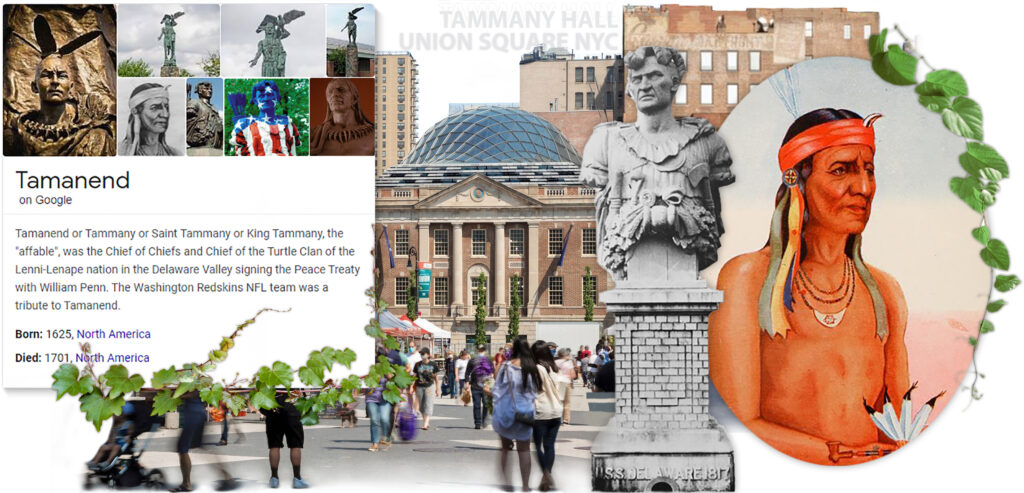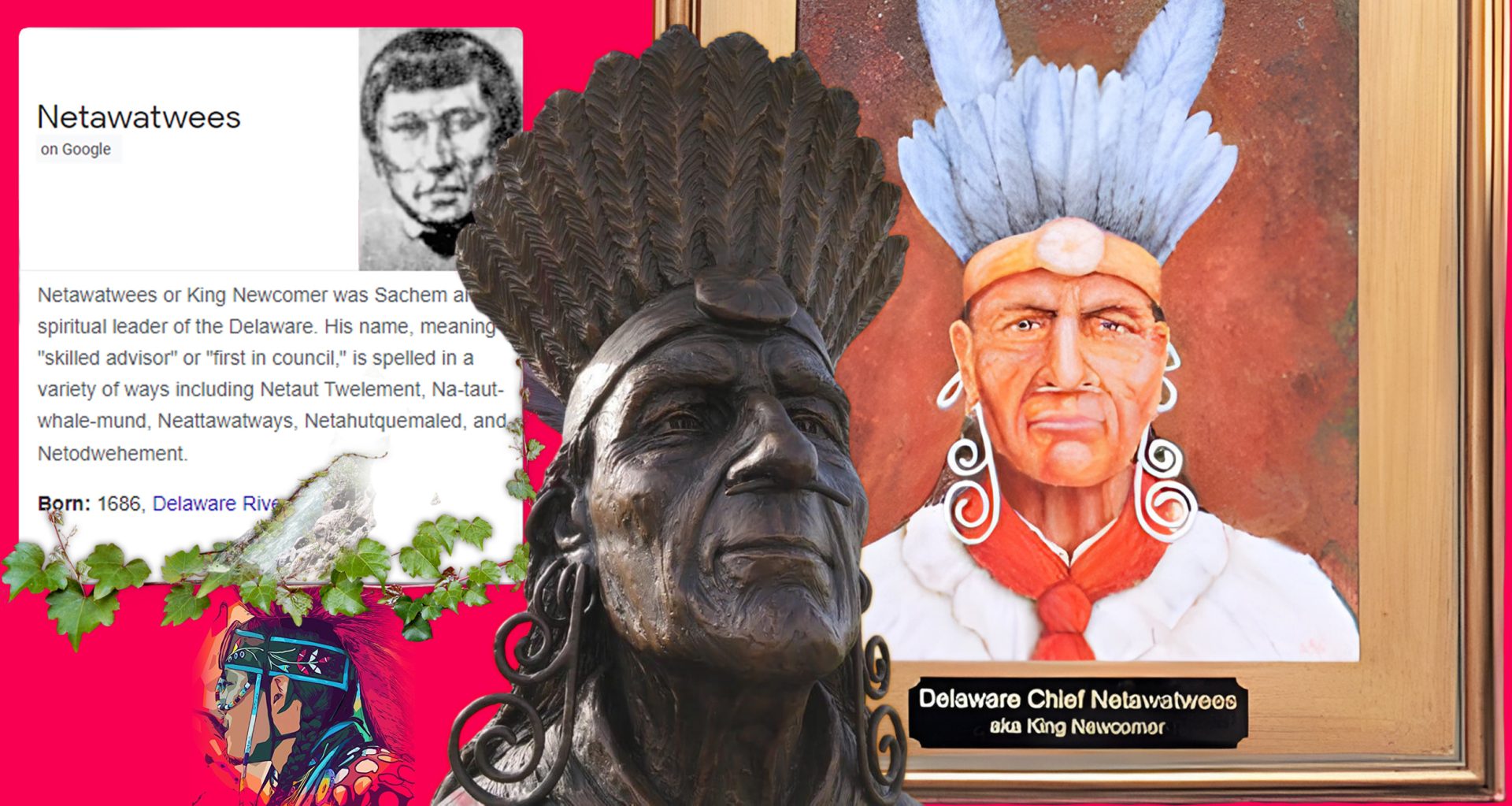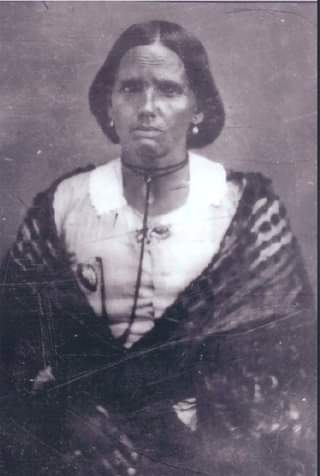Matthew Edward Hall is from a doubled Bloodline of legendary Delaware Chiefs & Kings (also Spiritual Leaders/Healers).

Tamanend III(St.Tammany)
Details
The most legendary being Tamanend III also known as St. Tammany, “The Patron Saint of America,” who signed the Peace Treaty with William Penn, founding Pennsylvania. The agreement is to live together in peace. The wars/ownership came after their lifetime. Benjamin Franklin, John Hancock & Many Leaders were members of the “Son’s of St. Tammany.” St. Tammany’s Parish Louisiana has a population of 260,000. Tammany Hall in New York City was named in his honor and was the political machine that ran New York City until the 1950s. Tammany Hall orchestrated the development of the Brooklyn Bridge. Tamanend III is the figurehead of the USS DELAWARE. Two public schools are named in his honor: St. Tammany Junior High, & Tamanend Middle School with amazing teachers & staff, and Mount Tammany in New Jersey.

King Tamanend I & II
Details
King Tamanend I (946 A.D.)
All Lenape were friends of King Tamanend I. Known as “Affable.” All the tribes came to support him. The Lenape flourished in paradise during the time of King Tamanend I.King Tamanend II (1451 A.D.)
Again an affable arose to make peace instead of warfare. King Tamanend II was a great one, all loved him. All the nations now made treaties as friends.Before King Tamanend I
Before King Tamanend I, it becomes a mystery. Following the pattern of Chief/King selection through bloodlines, The line of Chiefs/Kings likely continues on to the start of social organization. It all starts from a boy and a girl. They have to find each other, and they obviously come from their parents. Parents and siblings band together and eventually you have a community. One sibling might get mad and convince their friends to get mad, and suddenly you have two communities. Some choose to venture different journeys, like searching for cooler or warmer weather.Princess Tamanend
The Sacred Mystery
Details
There’re mysterious, spiritually significant, sacred synchronistic coincidence’s (miracles) never before witnessed, within the details. They continue on, in and around Matthew’s life. For example, Matthew Edward Hall & William Penn share the same October 14th birthday, centuries apart by chance. You can catch a glimpse of the mysterious higher power/order proven by details like this. The original Tammany Hall was on E 14TH ST. Union Square, NYC.


This provides groundbreaking insight into the mystery of even our own everyday actions and creativity. The most seemingly random detail that we now may overlook can hold major significance later on. Proof of the Divine Miraculous encourages us to stay strong when times get tough and always look for the optimistic light, lessons, and meaning when enduring hardships or difficulties. You’ll find your way out of even the worst of days or events. You’re the one finding this right now out of all the people on Earth.







Chief Nutimus
Nutimus oversaw “The Walking Purchase,” Generously gifting land as far as you can walk in a day. This inspired early Pennsylvania to develop an elaborate plan with men on horseback, to obtain as much land as possible from the Delaware. He’s also the First known to cure rabies.
__ — [Written by Mystery Author] —__
NUTIMUS (NOOTAMIS) – A Delaware Chief, originally from New Jersey. When his grandfather in Pennsylvania died, he took up residence on ancestral land between Tohiccon Creek and the Lehigh River. He was also a famous Indian doctor, known to have cured his daughter of rabies and madness induced by the bite of a mad dog, and to have saved the life of the poet William SATTERTHWAITE who was bitten by a rattlesnake. From 1734 to 1737 he was involved in altercations with the Penn’s over land encroachments. In 1737 he signed the confirmation deed for the Walking Purchase, but protested the manner in which the walk was performed. When the Six Nations rejected his protest, he crossed the mountains to the North Branch of the Susquehanna and settled at Nuttimus Town, west of present Nescopeck. There he lived in a large house with his five married sons and their families. He was a friend of the English. When the French and Indian War broke out, he moved north to the neighborhood of Passigachkunk (Canistero, NY). At the time of Pontiac’s War, he moved to the Big Island (Lock Haven) on the West Branch of the Susquehanna. Stories of his later residence and death in the Ohio country involve confusion between “Old KING NUTIMUS and his son Isaac NUTIMUS.
Nutimus, the great famous Lenape Chief and “medicine man” of the early 1700s. He cured many of life’s ills with roots and herbs. Much in demand by both Native Americans and colonists, he lived in the rugged wilderness of Nockamixon in Upper Bucks County. He responded to medicinal needs both here and across the Delaware River in New Jersey where he was born. He was famous as a gifted healer and pacifist Chief.
Among legendary intercessions by Nutimus was saving the life of settler William Satterthwaite after he was bitten by a rattlesnake on a hill above Lumberville in Solebury. The poet was in excruciating pain by the time the chief reached him. Using a herbal calamus root compound, he restored Satterthwaite to health, warning him to stay off the mountain. The ability of healers like Nutimus astounded Europeans. “The Natives know how to cure very dangerous and perilous wounds and sores by roots, leaves and other little things,” reported New York lawyer Adriaen van der Donck in 1659.
Locating medicinal ingredients was crucial. For instance, Native’s knew today’s well-known Buckingham Mountain near Lahaska as “Pepachganking”. It meant “at the place of the calamus root.” The 3-mile-long mountain was a defacto Rx dispensary for calamus. Internally, it could be used to treat ulcers and much more. As a topical skin ointment, curing poison ivy, poison oak and other irritations. The plant relaxed muscles, brought on sleepiness and could reduce swelling, perhaps even heal cancer. It also repelled and killed insects, important when living in the woods.
The trick was dosage. A bit too much was toxic and possibly carcinogenic. These skills are mysterious, elevating those like Nutimus to spiritual leaders along with their words and wisdom. Nutimus was against war. He knew William Penn and it was with him that tribal peace endured for 50 years. That tradition inspired artist Edward Hicks of Newtown to paint his celebrated “Peaceable Kingdom” masterpieces.
Nutimus often traveled with his daughter who was perfect in English unlike her dad. On their visit to settler Edward Marshall’s home in Tinicum, she suffered a rabid dog bite. Nutimus directed Marshall and others to build a narrow trough into which the chief placed his daughter, bound tightly. Nutimus then spread a warm mixture of herbs and roots over her, covering all but her face. There she remained for a few days. Miraculously the fever lessened, her respiration returned to normal and she recovered. It was “a perfect cure using the herb Seneca snakeroot,” reported historian William J. Buck in 1855.
Medicine men like Nutimus knew certain herbs and roots like snakeroot were cures for inflammation, croup, the common cold, bleeding wounds, sore throat and toothache. Nutimus’ knowledge of such wonders eventually faded into history. So too has Buckingham Mountain’s reputation as a source of calamus root. I’m convinced it still grows there having seen the stalks on the hillside when we lived nearby. But did the Indian name – pepachganking – really describe calamus? As in all aspects of history, other points of view come into play. Dr. Amandus Johnson in “Geographia Americae” who studied the Lenape in the 1600s wrote “pepachganking” should be spelled “Papchesing” with a different meaning.
*Sources include “Place Names in Bucks County Pennsylvania” by George MacReynolds published in 1942; “History of Bucks County” by William J. Bucks published in 1855 and “Geographia Americae with an Account of the Delaware Natives Based on Surveys and Notes Made in 1654-1656″ by Peter Lindestrom (translator) published in 1925.
Chief Wendacolla
Chief Solomon Journeycake
Son of Chief Buckongahelas & Chief Hopocan (Captain Pipe)’s daughter.
Son Dan

Chief Pok On Ga
Father of the Wife of Netawatwees, and Grandfather of Chief Hopocan (Captain Pipe).
Ahkechlungunaqua
